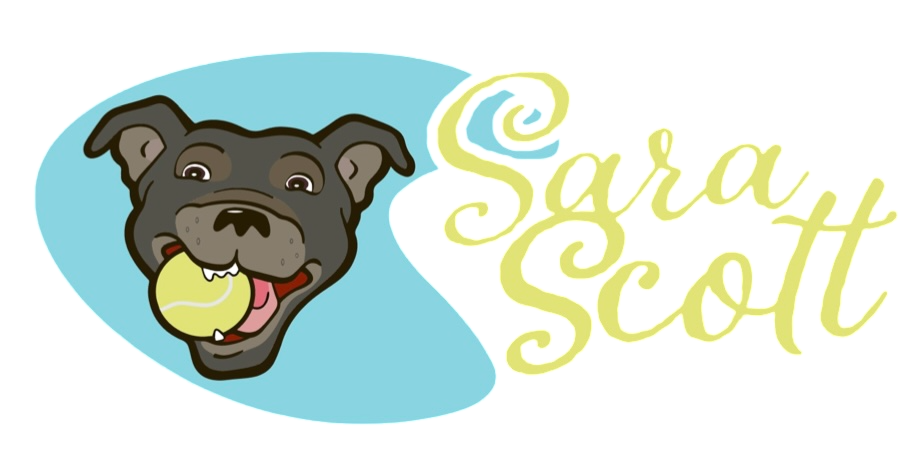Demand Barking in Dogs: Understanding and Addressing Unmet Needs
- Sara Scott
- Mar 8, 2024
- 4 min read
Demand barking is a common issue faced by many dog owners. While it can be frustrating and disruptive, it's essential to understand that demand barking is often a dog's way of expressing an unmet need. By reframing our perspective and focusing on proactively meeting our dog's needs, we can effectively address this behavior.

What is Demand Barking?
Demand barking is an old-school label used to describe a dog who barks repeatedly at their owner to get attention, food, or other resources. This type of barking is often persistent and can be difficult to stop once it starts. Many dogs learn that barking is an effective way to get what they want, and the behavior becomes reinforced over time.
Reframing Demand Barking as an Expression of Unmet Needs
Instead of viewing demand barking as a nuisance or a behavior that needs to be eliminated, it's crucial to recognize that it's a form of communication. When a dog engages in demand barking, they are trying to tell us that they have a need that isn't being met. This need could be for attention, exercise, mental stimulation, or access to resources.
Antecedent Arrangement: Proactively Meeting Your Dog's Needs
One of the most effective ways to address demand barking is through antecedent arrangement. This involves setting up the environment and your dog's routine in a way that proactively meets their needs, reducing the likelihood of demand barking occurring in the first place.
Some examples of antecedent arrangement include:
Providing plenty of physical exercise and mental stimulation throughout the day
Offering regular opportunities for social interaction and playtime
Ensuring that your dog has access to necessary resources like food, water, and comfortable resting places
Establishing a consistent daily routine that meets your dog's needs
Cueing an alternative behavior before your dog starts barking. For example, if sitting at your desk to work usually results in your dog barking, sit down at your desk and immediately cue your dog to lie on a mat and give them a frozen food-stuffed Kong to work on.
By being proactive and meeting your dog's needs before they feel the urge to bark, you can help prevent demand barking from becoming an issue.
Positive Reinforcement Training
In addition to antecedent arrangement, positive reinforcement training can be a valuable tool in addressing demand barking. This involves reinforcing alternative, appropriate behaviors that serve the same function as barking.
For example, if your dog tends to bark for attention, teach them that sitting calmly or bringing a toy to you results in the attention they seek. By consistently reinforcing these alternative behaviors, your dog will learn that they are more effective ways to communicate their needs than barking.
Avoid Extinction and Ignoring
While it may be tempting to simply ignore your dog's demand barking in hopes that it will go away, this approach can be counterproductive. Ignoring a barking dog can lead to frustration and an escalation of the behavior, as the dog becomes increasingly desperate to have their needs met.
Instead, focus on understanding the underlying need behind the barking and finding proactive ways to address it. This approach is more effective in the long run and helps achieve better behavior faster and more efficiently.
What to Do When Your Dog is Already Barking
If you find yourself in a situation where your dog is already barking and you've missed the opportunity to be proactive, it's important to respond thoughtfully. Any response to the barking is likely to reinforce the behavior, so it's better to redirect your dog after one bark rather than attempting to ignore them and ultimately responding after 30 seconds of barking.
Ask yourself, would you rather reward one bark or 30 seconds of barking? If you find yourself in this situation often, it's a sign that you need to focus more heavily on the proactive suggestions discussed above, such as antecedent arrangement and positive reinforcement training.
Conclusion
Demand barking is a common issue, but by reframing it as an expression of unmet needs and focusing on antecedent arrangement and positive reinforcement, you can effectively address the behavior. Remember, your dog is trying to communicate with you, and by being proactive and responsive to their needs, you can achieve healthier behavior in day to day life. If you find yourself frequently responding to your dog's barking, take it as a cue to double down on proactive strategies to prevent the behavior from occurring in the first place.
Ready to Transform Your Relationship with Your Dog?
If you're struggling with demand barking or other behavior issues, you're not alone. Many dog owners face these challenges, but with the right guidance and support, you can learn how to communicate effectively with your dog to achieve peace of mind and a quiet home.
That's where my custom training programs come in. As part of my Dog Lab, I offer personalized, science-based solutions tailored to your unique needs and goals. I will work with you one-on-one to develop a comprehensive plan that addresses the root causes of your dog's behavior issues and helps you create a more rewarding, stress-free life together.
From antecedent arrangement and positive reinforcement techniques to real-time support and guidance, my programs provide you with the tools and knowledge you need to succeed. Whether you're dealing with demand barking, separation anxiety, reactivity, or other challenges, I'm here to help you every step of the way.
Don't wait another day to start your journey towards a better relationship with your dog. Click here to learn more about my Dog Lab and discover how my custom training programs can help you achieve your goals. Your dog is counting on you to be their advocate and guide – let me show you how to be the partner they need and deserve.

Comments